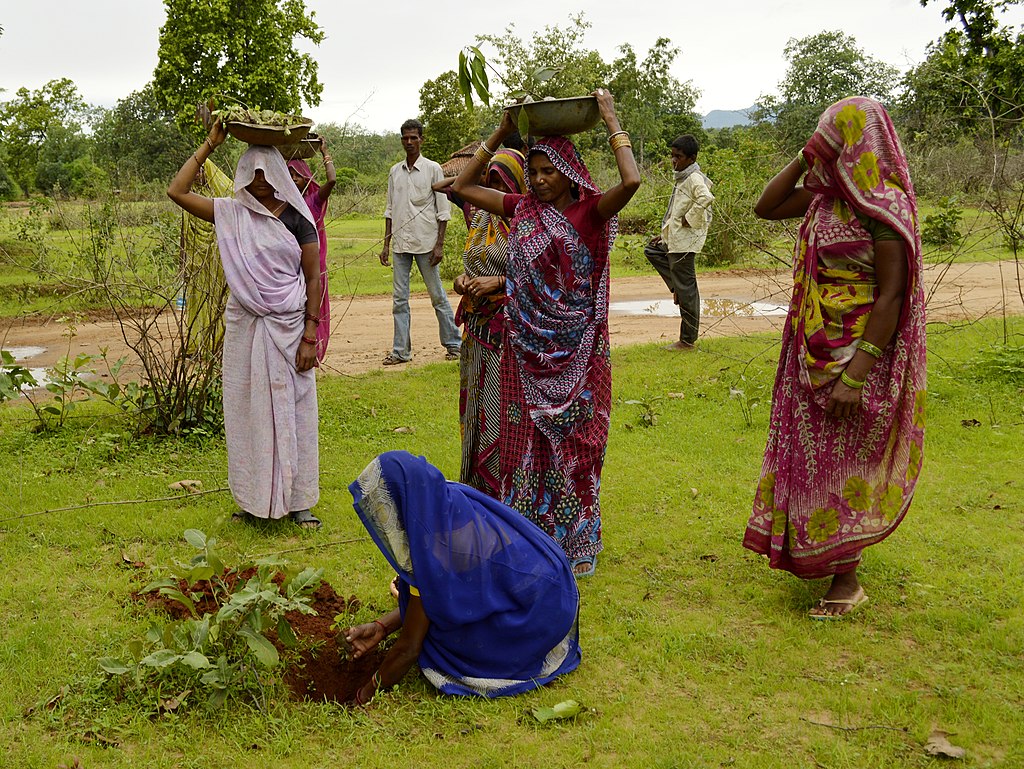In early July 2021, the state of Uttar Pradesh in India took part in an annual tree planting drive and planted 250 million saplings in a single day. With hopes to have a third of its total land area under forest cover by 2030, state officials believe this to be an inexpensive way to combat climate change. Despite skepticism on the effectiveness of mass tree planting, other countries across the world have pledged to increase their forest cover and number of national parks.
—
In a bid to stabilise the climate, clean the air and reduce carbon emissions, volunteers in India took part in their fourth annual tree planting drive on July 4. Led by the Uttar Pradesh state government officials, lawmakers, and activists, approximately 250 million saplings were planted within a day, and it has been reported that a remarkable 80% of the saplings that have been planted over the last four years have survived.
The saplings were planted in farms, forests, schools and alongside highways and riverbanks all over the state of Uttar Pradesh, the country’s most-populous state. The forest cover of the state has increased over the last few years, due to what has now become a yearly tradition.
This annual tree drive was established as a means to increase the forest cover across the country. With $6.2 billion being allocated to this project, the government in India has vowed to have a third of its total land area (approximately 95 million hectares) under forest cover by 2030.
“We are committed to increasing the forest cover of Uttar Pradesh state to over 15% of the total land area in the next five years. In today’s campaign, over 100 million trees will be planted,” stated Manoj Singh, a state forest official.
You might also like: Tree Planting to Reduce CO2 Emissions: Philanthropic or Pointless?
Despite the high success rate, the long-term survival of the saplings still remains a concern. Usually only 60% of saplings survive, and the rest could succumb to disease or lack of water. Therefore, all the trees have been geo-tagged with QR codes to ensure that forest officials are able to monitor the survival rates and report on the success or failure of the saplings at individual sites.
State Forest Minister Dara Singh Chauhan said the survival rate of saplings in the past four years has gone up to 80%, due to the careful monitoring administered through the use of the geo-tags and QR codes. He has further commented that the forest cover in Utter Pradesh has gone up by more than 3%, compared to the national average of 2.89%.
As an inexpensive method in combating climate change and reducing carbon from the atmosphere, millions of trees are being planted in countries all over the world, such as China, Saudi Arabia, New Zealand, the UK etc. In Africa, The Great Green Wall project established just over a decade ago has noted their ambition to grow an 8,000 km of forest across the entire width of Africa. They believe that planting trees is a solution to not only climate change, but famine, drought, conflict and migration.
Similarly, in 2020 Pakistan launched their Protected Areas Initiative where they pledged to increase the number of national parks up to 45% till 2023. The aim of this initiative is to improve the forest cover over the country, target climate change threats and to protect and conserve their wildlife.
There has been reported skepticism on just how effective mass tree planting can impact climate stabilisation, as an average of 50 years of growing has been predicted before any carbon sequestering can occur. Furthermore, scientists have urged caution toward mass tree-growing projects as if implemented incorrectly, they could do more harm than good, in addition to wasting money. There should be as much focus on keeping the trees alive as there is on the number of seedlings planted, and projects need to research into how different types of forests are able to sequester the different amounts of carbon.
Joseph Veldman, Ph.D., assistant professor in the Department of Ecosystem Science and Management in the College of Agriculture and Life Sciences at Texas A&M University has urged caution toward mass tree planting projects: “While tree planting can be good in some deforested areas, tree planting in Earth’s natural grasslands destroys plant and animal habitat and will not sequester enough carbon to compensate for fossil fuel emissions. Few people realise that planting trees in the wrong places can actually damage ecosystems, increase wildfire intensity and exacerbate global warming.”
You might also like: Replanting Monoculture Plantations Are Not Reforestation Projects
Featured image by: Wikimedia Commons


















